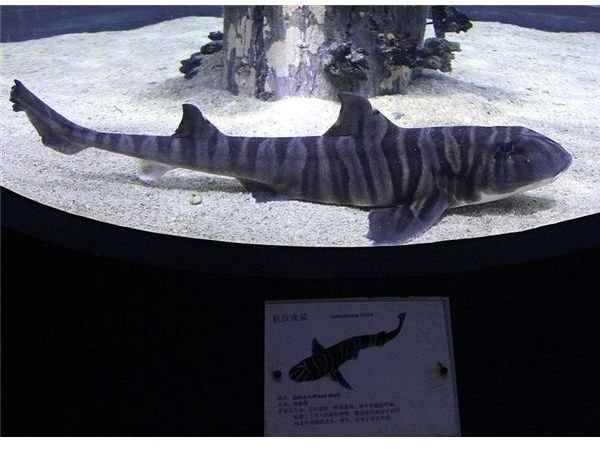

Furthermore, parametric F(ST) analyses and Bayesian clustering analyses indicated that the primary genetic break within the IWP is not represented by the IUCN classifications but rather is congruent with the Indonesian throughflow current. However, we found evidence of genetic subdivision within these regions, including subdivision between locations connected by habitat suitable for migration. Mitochondrial and microsatellite data sets from samples collected throughout northern Australia and Southeast Asia concord with the regional IUCN classifications. As they mature, the pattern changes to small dark spots on a grayish-tan background. Zebra sharks are born with stripes that are dark brown and golden. Overview These zebras lose their stripes As juveniles, zebra sharks have dark bodies with yellowish stripes. Zebra Sharks: The Zebra Shark family contains only one member, the Zebra, or as we call it here in Thailand, the Leopard Shark.

tigrinum Zebra Shark Facts for Kids 1-11 1. Found on sand around coral reefs and slopes adjacent to reefs. Kingdom: Animalia Phylum: Chordata Class: Chondrichthyes Superorder: Selachimorpha Order: Orectolobiformes Family: Stegostomatidae Genus: Stegostoma Species: S. In this study, we employed mitochondrial ND4 sequence data and 13 microsatellite loci to investigate the population genetic structure of 180 zebra sharks from 13 locations throughout the IWP to test the concordance of IUCN zones with demographic units that have conservation value. Habitat Warm-temperate and tropical seas. The demersal chondrichthyan, the zebra shark, Stegostoma fasciatum, is endemic to the IWP and has two current regional International Union for the Conservation of Nature (IUCN) Red List classifications that reflect differing levels of exploitation: 'Least Concern' and 'Vulnerable'. The region encompasses various densities of human habitation leading to contrasts in the levels of exploitation experienced by chondrichthyans, which are targeted for local consumption and export. The Indo-West Pacific (IWP), from South Africa in the western Indian Ocean to the western Pacific Ocean, contains some of the most biologically diverse marine habitats on earth, including the greatest biodiversity of chondrichthyan fishes.


 0 kommentar(er)
0 kommentar(er)
